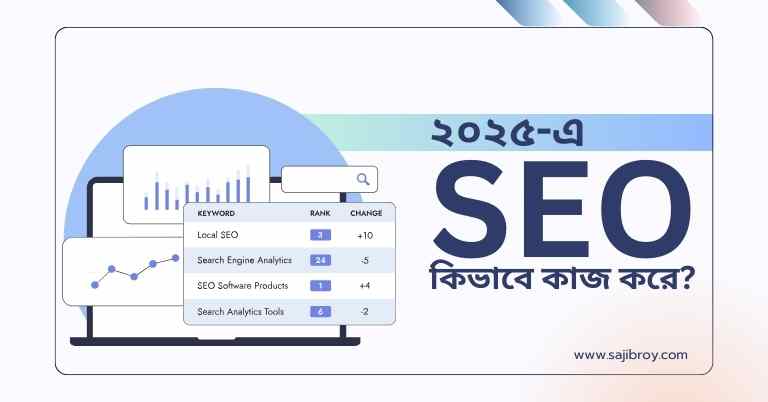User experience refers to the overall satisfaction and ease of use that a visitor experiences on a website, while design plays a crucial role in enhancing SEO by influencing user engagement, site speed, and mobile responsiveness. In the digital era, where online presence is critical for businesses, providing a seamless user experience through effective website design not only improves user satisfaction but also boosts search engine ranking and visibility.
A well-designed website ensures intuitive navigation, clear communication, and aesthetically pleasing visuals, fostering positive user interactions and retention. As search engines like Google prioritize user-friendly websites, incorporating design elements that enhance user experience becomes essential for SEO success. A website with excellent user experience attracts more visitors, encourages longer browsing sessions, and ultimately leads to improved search engine rankings and organic traffic growth.
RELATED TOPIC: Does UI UX Design Impact On Your Online Business?
Let's See the Topic Overview
Understanding User Experience (UX)
When it comes to website design and SEO, user experience (UX) plays a crucial role. User experience refers to how users perceive and interact with a website or application. It encompasses various factors such as ease of use, visual appeal, accessibility, and overall satisfaction. In essence, UX aims to create a positive experience for users throughout their journey on a website.
Definition Of User Experience
User experience can be defined as the overall experience that a user has when visiting a website or using a digital product. It encompasses not only the visual design but also the functionality, usability, and accessibility of the site. A well-designed user experience focuses on meeting the needs and expectations of the user, allowing them to navigate and interact with the site effortlessly.
Key Elements Of User Experience
User experience is influenced by various elements that contribute to the overall design and functionality of a website. These key elements include:
- Visual Design: The visual appeal of a website is crucial in capturing and retaining user attention. It involves the use of colors, typography, images, and layout to create an aesthetically pleasing experience.
- Navigation: Intuitive and well-structured navigation allows users to find the information they are looking for quickly and easily. Clear navigation menus, search functionality, and logical hierarchy contribute to a smooth user experience.
- Content: Engaging and relevant content that is well-organized and easy to read enhances the user experience. Including headings, subheadings, bullet points, and other formatting elements helps users scan and digest information effectively.
- Functionality: The functionality of a website includes features such as forms, buttons, filters, and interactive elements. These should be designed to be user-friendly and responsive, ensuring they work seamlessly across different devices and browsers.
- Responsiveness: With the increasing use of mobile devices, it is crucial for websites to be responsive and adapt to various screen sizes. A mobile-friendly design improves the user experience and also contributes to better search engine optimization (SEO).
- Page Load Speed: Slow-loading pages can frustrate users and lead to a poor user experience. Optimizing page load speed by compressing images, minifying code, and utilizing caching techniques can significantly enhance the user experience.
User Expectations And How They Impact UX
User expectations play a significant role in shaping the user experience of a website. Users expect websites to be intuitive, easy to navigate, and provide valuable information or services. Failure to meet these expectations can result in high bounce rates and low engagement, impacting both user satisfaction and SEO rankings. To ensure a positive user experience, it is vital to understand the target audience and cater to their needs and preferences. Conducting user research, analyzing user behavior, and gathering feedback can provide insights into user expectations and enable iterative improvements to the user experience.

Credit: www.searchenginejournal.com
The Connection Between Design And SEO
Design and SEO may seem like two unrelated aspects of building a successful website. However, they are intricately connected and play a crucial role in driving organic traffic and enhancing user experience. In this section, we will explore the significance of SEO and how design directly impacts its performance. From enhancing website engagement to influencing user behavior, design has a profound impact on SEO. Let’s delve deeper into the connection between design and SEO.
Introduction To SEO And Its Significance
SEO, or Search Engine Optimization, is the practice of improving a website’s visibility on search engine results pages (SERPs). It involves various strategies aimed at enhancing a website’s ranking in organic search results, ultimately driving targeted traffic. SEO is crucial for any website looking to establish a strong online presence, increase brand visibility, and attract potential customers.
An effective SEO strategy requires a comprehensive understanding of search engine algorithms, keyword research, on-page optimization, and backlink building. By optimizing your website for search engines, you can increase its chances of appearing higher in search results and capture the attention of more users. However, SEO is not just limited to optimizing content and meta tags; design also plays a vital role in improving SEO performance.
The Role Of Design In Enhancing SEO Performance
Design is not merely limited to the aesthetics of a website; it encompasses everything from layout and navigation to visual elements and user experience. Here are some ways in which design directly impacts SEO performance:
- Improved website load speed: Fast-loading websites tend to rank higher in search results. Users expect a website to load quickly, and search engines prioritize sites that provide a seamless user experience. By optimizing design elements such as image sizes, eliminating unnecessary scripts, and leveraging caching techniques, you can enhance website load speed, thereby positively impacting SEO performance.
- Mobile-friendly design: With the increasing use of mobile devices to access the internet, mobile-friendliness has become a crucial ranking factor. Search engines prioritize websites that are responsive and provide a seamless experience across different devices. By implementing a mobile-friendly design, you can improve your website’s chances of ranking higher in mobile search results.
- Intuitive navigation and user experience: User experience is paramount to both SEO and user engagement. A well-designed website with clear and intuitive navigation enables users to find the information they need quickly and easily. This not only improves user satisfaction but also reduces bounce rates and increases the time users spend on your website, signaling search engines that your site is valuable and relevant.
- Visual appeal and user engagement: A visually appealing design with compelling visuals and multimedia elements can captivate users and encourage them to explore your website further. Engaged users are more likely to share your content, link to your site, and spend more time on your pages, all of which positively impact SEO performance.
- Positive user behavior signals: When users have a positive experience on your website, they are more likely to engage, convert, and return. These positive user behavior signals, such as low bounce rates, high click-through rates, and longer session durations, indicate to search engines that your website is valuable and deserving of higher rankings.
With these factors in mind, it becomes evident that design plays a crucial role in enhancing SEO performance. By prioritizing user experience, mobile-friendliness, intuitive navigation, and engaging visuals, you can create a website that not only appeals to users but also gains favor with search engines.
Optimizing Website Design For SEO
The Impact Of Website Speed On User Experience And SEO
In today’s fast-paced digital era, website speed is a crucial factor that significantly impacts both user experience and SEO performance. The speed at which your website loads plays a pivotal role in determining whether a visitor stays or bounces off to a competitor’s site. It is a known fact that users have little patience when it comes to slow-loading websites, and a delay of just a few seconds can lead to frustration and a negative perception of your brand.
From an SEO perspective, website speed is equally important. Search engines like Google prioritize delivering the best user experience, and a slow website can adversely affect your rankings in search engine results pages (SERPs). Google’s algorithm takes website speed into account when determining ranking positions, as it understands that users prefer fast and smooth browsing experiences.
| User Experience | SEO Performance |
|---|---|
|
|
Mobile-friendly Design And Its Effect On SEO Rankings
In this era of mobile dominance, having a mobile-friendly website is no longer optional; it is a necessity. With the rise of mobile devices, an increasing number of users browse the internet using their smartphones and tablets. Thus, ensuring your website is optimized for mobile devices is crucial for both user experience and SEO.
From an SEO perspective, Google introduced mobile-first indexing, which means the search engine primarily uses the mobile version of a website for indexing and ranking purposes. If your website lacks mobile optimization, it may be penalized in the search rankings, resulting in reduced organic visibility and traffic.
- A mobile-friendly website improves user experience on small screens.
- Responsive design eliminates the need for separate mobile and desktop websites.
- Reduced bounce rates and increased user engagement contribute to better SEO rankings.
- Mobile optimization improves website load speed on mobile devices.
The Importance Of Intuitive Navigation And User-friendly Layout
When it comes to website design, intuitive navigation and a user-friendly layout are essential elements that can make a significant impact on both user experience and SEO performance.
Intuitive navigation allows users to easily find the information they are seeking, resulting in a positive user experience. Users appreciate websites that have clear and logical navigation menus, allowing them to quickly navigate through different sections and pages of your site. This, in turn, encourages users to stay longer on your site, reducing bounce rates, and increasing the chances of conversions.
From an SEO perspective, intuitive navigation not only improves user experience but also helps search engines crawl and index your website more effectively. When search engines can easily understand the structure and organization of your site, it becomes easier for them to determine the relevance and value your website provides to users.
- Clear and logical navigation menus enhance user experience.
- Intuitive navigation reduces bounce rates and increases user engagement.
- Search engines can crawl and index your site more effectively.
- Effective navigation helps search engines understand your website’s relevance and value.
User Experience And SEO Best Practices
In today’s digital landscape, user experience (UX) has become a crucial factor not only for retaining visitors but also for optimizing your website’s search engine rankings. When it comes to website design, the user experience directly impacts search engine optimization (SEO). By understanding the role of high-quality content, responsive web design, and clear calls-to-action, you can create a website that not only delights your visitors but also drives organic traffic to your site.
The Role Of High-quality Content In Improving User Experience And Seo
High-quality content is at the heart of both user experience and SEO. It is essential to provide relevant and valuable information that will engage your audience and keep them on your site for longer periods. Besides, search engines like Google prioritize websites with well-crafted, informative content.
Here are a few best practices to keep in mind:
- Keyword research: Conduct thorough keyword research to identify the phrases your target audience is searching for. This will help you optimize your content and attract the right visitors.
- Write for your audience: Craft content that appeals to your audience’s interests and needs. Use a conversational tone, break up text with subheadings, and emphasize key points to enhance readability.
- Unique and original: Ensure that your content is original, well-researched, and provides a fresh perspective on the topic. This will establish your authority and distinguish your website from competitors.
- Optimize for readability: Use short paragraphs, bullet points, and numbered lists to break up content and make it easier to digest. Incorporate relevant images and videos to enhance engagement.
Importance Of Responsive Web Design For Mobile Users And SEO
In today’s mobile-centric world, having a responsive web design is crucial for user experience and SEO. With an increasing number of people accessing the internet through mobile devices, search engines prioritize mobile-friendly websites in their rankings. If your site is not mobile-responsive, you risk losing both visitors and search engine visibility.
Here are a few key reasons to prioritize responsive web design:
- Mobile-friendly usability: A responsive design ensures that your website is accessible and easy to navigate on various screen sizes and devices. This provides a positive user experience for mobile users and encourages them to stay on your site longer.
- Improved site speed: Responsive web design optimizes your site’s load time, resulting in a faster and more seamless user experience. This is crucial, as slow-loading websites can frustrate visitors and negatively impact your SEO.
- Consistent branding: A responsive design allows you to maintain a consistent brand image across different devices. This helps build brand recognition and trust with your audience.
Incorporating Clear And Concise Calls-to-action For Improved User Engagement
Effective calls-to-action (CTAs) are essential for guiding users through your website and encouraging them to take the desired actions. Whether it’s signing up for a newsletter, making a purchase, or contacting your business, clear and concise CTAs can significantly impact user engagement.
Consider the following best practices for incorporating CTAs:
- Strategic placement: Position your CTAs prominently and strategically throughout your website, especially on high-traffic pages. Use contrasting colors, compelling copy, and compelling graphics to draw attention.
- Use action-oriented language: Craft your CTAs using persuasive language that encourages users to take action immediately. Use actionable verbs such as “Join now,” “Learn more,” or “Get started.”
- Provide value: Clearly communicate the benefits users will receive by following your CTAs. Whether it’s exclusive discounts, valuable content, or a seamless user experience, make sure users understand what they stand to gain.
By implementing these user experience and SEO best practices, you can optimize your website to not only rank well in search engine results but also provide a delightful and rewarding experience for your visitors. Remember, the key is to prioritize the needs and preferences of your users while ensuring your website meets the requirements of search engines.
Improving User Experience Through Design
Design plays an integral role in enhancing the user experience (UX) on a website. It goes beyond creating an aesthetically pleasing layout; a well-designed website can significantly impact user engagement and search engine optimization (SEO). By focusing on enhancing website accessibility, utilizing visuals and multimedia, and considering the impact of color psychology and aesthetics, we can create a seamless user experience that not only satisfies visitors but also improves SEO rankings. Let’s delve deeper into each of these areas:
Enhancing Website Accessibility For Better User Experience And SEO
Website accessibility is crucial for providing equal opportunities to all users, regardless of their abilities. A well-designed accessible website ensures that individuals with disabilities can navigate and interact with the site effortlessly. Moreover, it directly impacts SEO, as search engines prioritize websites that cater to all users’ needs. Here are a few ways to enhance website accessibility:
- Optimize website navigation by implementing clear menus and breadcrumbs
- Include alternative text (alt text) for images to assist those using screen readers
- Ensure proper color contrast for better readability
- Provide captions or transcripts for multimedia content to accommodate users with hearing impairments
- Design a responsive layout that adapts to different screen sizes and devices
Utilizing Visuals And Multimedia To Enhance UX
Visuals and multimedia elements play a significant role in capturing users’ attention and delivering information effectively. Incorporating engaging visuals can improve UX and keep visitors engaged for longer durations. Here’s how you can leverage visuals and multimedia to enhance user experience:
- Include relevant and high-quality images that complement the content
- Implement infographics and charts to present complex data in a visually appealing manner
- Embed videos or audio clips to provide additional context or explanations
- Optimize multimedia files by compressing them to reduce loading times
The Impact Of Color Psychology And Aesthetics On User Engagement
Colors have a powerful psychological impact on individuals’ emotions and behaviors. By leveraging color psychology and aesthetics, we can create a visually appealing website that encourages user engagement. Here are some considerations:
- Choose a color palette that aligns with your brand’s message and evokes the desired emotions
- Utilize color contrast to enhance readability and draw attention to important elements
- Use color in call-to-action buttons and links to prompt user interaction
- Ensure consistency in color usage throughout the website to establish a cohesive visual identity
By focusing on enhancing website accessibility, utilizing visuals and multimedia, and considering the impact of color psychology and aesthetics, we can design a user-friendly website that not only grabs visitors’ attention but also improves SEO performance. Remember, a well-designed website is the foundation for an optimal user experience and successful SEO strategy.
Conclusion
To maximize your website’s SEO potential, it is crucial to prioritize user experience and design. A well-designed website not only enhances visual appeal but also improves navigation, loading speed, and responsiveness. By considering user needs, preferences, and behavior, you can create a seamless and enjoyable experience, leading to increased engagement and improved search engine rankings.
Incorporating effective design elements will ultimately help your website stand out in the competitive digital landscape. Remember, both SEO and design go hand in hand, making for a winning combination. So, invest in user-centric design and watch your website soar to new heights.




![6-Month Local SEO Plan [Download Your Complete Proposal Template]](https://www.sajibroy.com/wp-content/uploads/2025/01/6-Month-Local-SEO-Plan-Download-Your-Complete-Proposal-Template.jpg)







